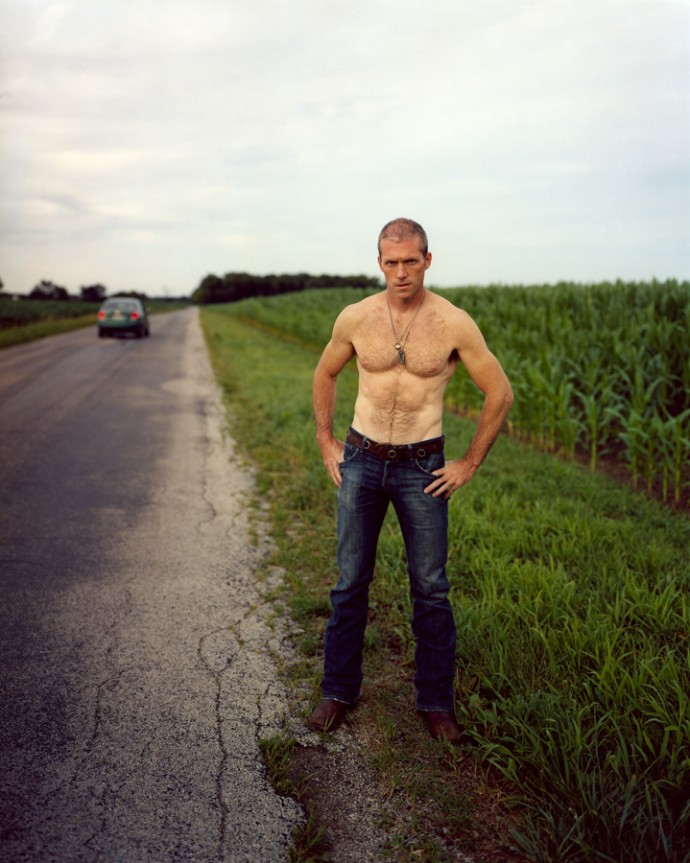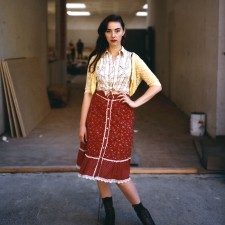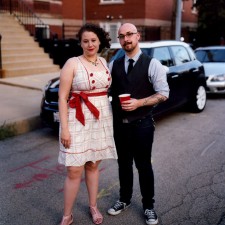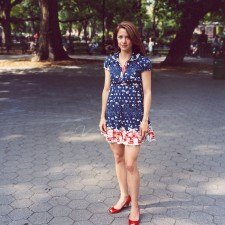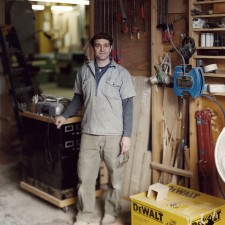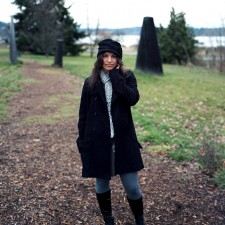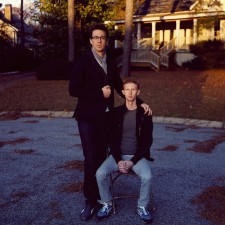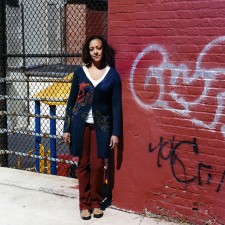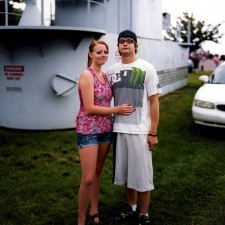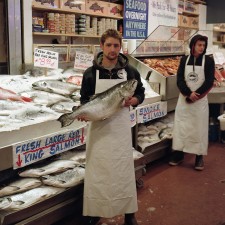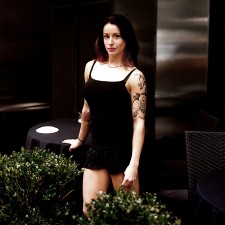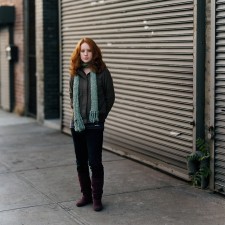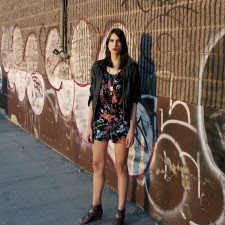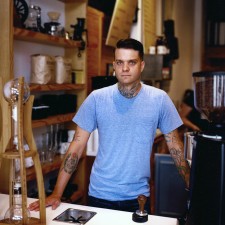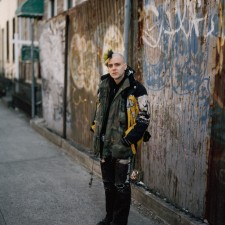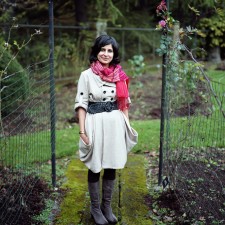Starting in late 2007, I began photographing denizens of New York City with an 8×10 view camera. This type of camera uses 8-inch by 10-inch photographic negatives from which either contact prints (same size as the negative itself) or enlargements are made. The contact prints have detail that approaches human vision and have greater resolution than many digital processes.
In the tradition of photographers such as and Rineke Dijkstra and Joel Sternfeld, I choose to work with the unwieldy camera and older, more traditional materials for the sake of the detail that such a medium renders, and for the inherent value of a single negative. Great care must be taken to avoid damage to a negative, as opposed to digital media that can be reproduced ad infinitum, with less risk of degradation to the original.
The subjects I choose are often artists, and people with whom I’ve become acquainted. Since the process can be unwieldy, it is helpful to have a person’s attention, and develop a rapport with them, before shooting. This kind of photography is difficult to rush. The biggest inspiration for this work is no doubt August Sander, a well-known pre-World War II German photographer, whose seven volume photographic record People of the 20th Century was a grand attempt to not only document as many people as possible in the German culture of the day, but also to make every attempt to represent different classes, professionals and age groups. His Artists portfolio (and this demographic) was of particular interest to me, and is reflected here. Dancers, models, photographers, designers, actors and more are represented.
As the work continues to evolve, I have become drawn to the idea of recording American waiters in restaurants (who are often artists of some kind themselves). French street photographers have a long tradition of capturing the en plein air café worker. I am hoping to embark on an even more specific sub-portfolio that involves waitstaff, and hope to show a representative cross-section of race, age, gender and location.
More specifically, the photographs here document the tension (and tradition) between full-body portraiture and the subjects’ indigenous spaces. I use the term “indigenous” loosely as most of the subjects are photographed in their own neighborhoods, while a few are in spaces that have symbolic meaning to them alone.
An example of the latter would be “Clay, 2010” a photographer who technically lives in New York, but has been traveling and working in other countries for the better part of a decade. He helps lead a crusade against manufactured GMO food, and was thus captured, with a powerful pose, in front of his ubiquitous enemy here in Ohio.
The attempted balance between a photograph of a subject and how much of their surroundings should be included leads to a perceived dichotomy between two areas: competition for attention (example: the subject her/himself vs. graffiti on a wall), and a subtle revelation of clues to the subject’s chosen community and environment. These images are an attempt at intimacy, a celebration of variation, an exploration of choice (locality, clothing), and a careful consideration of personal detail.
These images are captured using Kodak 8×10 film and printed on chromogenic papers (not digital). While digital technologies are catching up fast, I continue to be struck by the abilities of analog large format to record the most minute of details and an unmatched color range. [Official Website]



